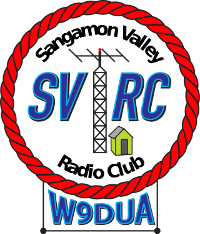Ham radio is like a buffet line. The variety in ham radio nearly guarantees that no one gets bored with the hobby. Just try something else when you are ready for something different.
- "Boat Anchors" Many hams derive great satisfaction from refurbishing older (often larger) ham radios built prior to the digital age. These old beauties especially delight the tinkerer. And with the proper TLC, these radios can get back in the game.
- VHF/UHF Operations Contacts for local hams with a Technician or higher license. These bands are used for local rag-chews during the daily commutes, weatherspotting and nets covering any number of topics.
- 6 Meter Operations VHF Nicknamed the magic band for its ability to open up suddenly from dudsville to the life of the party. It's open to ham operators with a Technician or higher license.
- HF Operations 160-10 meters Contacts for hams with a General or higher license. Technician level operators have limited use of the HF bands and should upgrade to General to enjoy increased privileges. Communicate with stations across the country and around the world.
- Satellite Communications (VHF/UHF using LSB and USB) Nearly out of this world, satellite communication works best with two radios or split frequencies as you try to connect via the satellite as it passes by.
- International Space Station astronauts who are ham radio operators (call sign: NA1SS) often work stations on Earth as they pass over.
- Ham This is a buffet, right? Amateur radio operators gotta eat sometime.
- Repeater Expands your range from local simplex operations to county-wide and further depending on power, antenna and band conditions. W9DUA has a repeater with great range. Linked repeaters can cover an even wider area. Macoupin County ARC (K9MCE) lists the participating repeaters in a linked repeater system on their website.
- Earth Moon Earth (moon bounce) ham operators contact stations by bouncing their signals off of the surface of the moon.
- QRP Operations How low can you go? QRP is low power. Radios and their batteries are smaller making them perfect for portable field operations.
- Continuous Wave (CW) Also known as Morse Code, CW operators developed an abbreviated language that gave rise to texting language used today. Today's texters and some talented CW operators competed on a late night television show to see who could send a message faster. Guess who won? It's a very efficient mode of communication and is easier to copy when band conditions are less than perfect. Just for fun, watch this WG0AT You Tube video.
- Fox Hunting Radio Direction Finding (RDF). Find hidden transmitters. Some do their fox hunting from a vehicle and others by foot. Radio direction finding has practical applications in locating the sources of interference (human or wayward electronics), locating stolen equipment, missing persons or, for ham radio operators, fun (like treasure hunting).
- Digital Modes With sound card hardware, special software and a data interface, hams can communicate by radio through their computers by sending streams of characters. There are several protocols used by hams (RTTY, PSK31, MFSK, Hellschreiber to name some) each having their own advantages or limitations depending on your viewpoint. APRS (automatic position reporting system) will put you on a map that shows your real time location using APRS software and a few key pieces of equipment. This is very handy during public service events for mobile resources.
- Homebrew Radios and Antennae Some cannot resist the challenge to build their own radios and antennas. Many hams have created stealth antennas or just camoflauged them so as not to alarm their neighbors. Antennas have snuck around the eaves of the house along the guttering, disguised themselves as guy wires for very tall purple martin houses and run up flag poles for starters. Hams have also used common household items to build some rather innovative and perfectly resonant antennas. Now where is that photo of the homebrew antenna created by a ham who used a couple of metal lawn chairs in a dipole configuration??
- Field Radio "Do what you can with what you have." Go portable and pack up your radio, power suppy and antenna and go hiking, to the beach, anywhere outside and off of the grid. Field Radio is what many ham operators do during the annual Field Day in June.
- Microwaves Although microwaves are handy in the kitchen for heating up your lunch, they can also be used to contact other stations using microwave frequencies. Using microwaves is a hobby within the amateur radio hobby. Enthusiasts have found economical ways to contact stations using microwaves that are fairly reliable.
- SOTA (Summits on the Air) This is a contesting ham activity that encourages ham radio operators "activators" to make contacts from a summit. This involves hiking with your ham radio gear to a summit (there are 9 qualifying summmits in Illinois). SOTA also recognizes "chasers" who are individuals who make contact with activators from the flatlands (or perhaps the comfort of their couches at home). A Presentation on SOTA was given during the August 2017 SVRC Club meeting. Check it out.
- Public Service Events SVRC provides amateur radio communications to various public service events to ensure safe and successful operations. See the Abe's River Race held on the Sangamon River in July 2017 for an example of "Hams in Action."
- Special Event Stations These events are run as a team effort consisting of several ham operators working in shifts making as many contacts as they can. The special event can celebrate or commemorate any special event. Hams are able to get a special call sign that is valid for the duration of the event. The call sign is a short "1x1" configuration (alpha prefix, number, alpha suffix). See the Special Event station W9I held at the IL State Fair Grounds in 2017.
There is a wealth of information on the internet about these various ham radio activities and modes.
